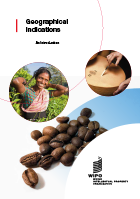What you need to know about GIs protection
Protection for a GI is granted by a national or regional authority – a special body responsible for GI protection, or an IP office. Protection can be requested by a group of producers, like a cooperative or association. This group will be responsible for ensuring that the products protected by a GI fulfil certain requirements. In some countries, protection may also be requested by a local government body.
Once a GI gets registered, the right to use it belongs to producers in the geographical area defined in the registration, who comply with the specific conditions of production.
GIs are protected in different countries and regional systems through a wide variety of approaches. You can use the WIPO Lisbon System to obtain protection for GIs in multiple countries or regions.
In many countries, GIs registration is not subject to a specific period of validity, and the protection for a registered GI will remain valid unless the registration is cancelled.
The actual costs of GIs protection vary significantly from country to country and may include:
professional fees for completing the application process
official fees paid to the national or regional authority
translation costs, if filing abroad
renewal fees.
Protecting a GI enables those who have the right to use the indication to take measures against others who use it without permission and benefit from its reputation (“free-riders”).
The party allowed to enforce a GI, and the sanctions for unauthorized use, varies from country to country. For more information, consult the relevant national or regional IP office.




